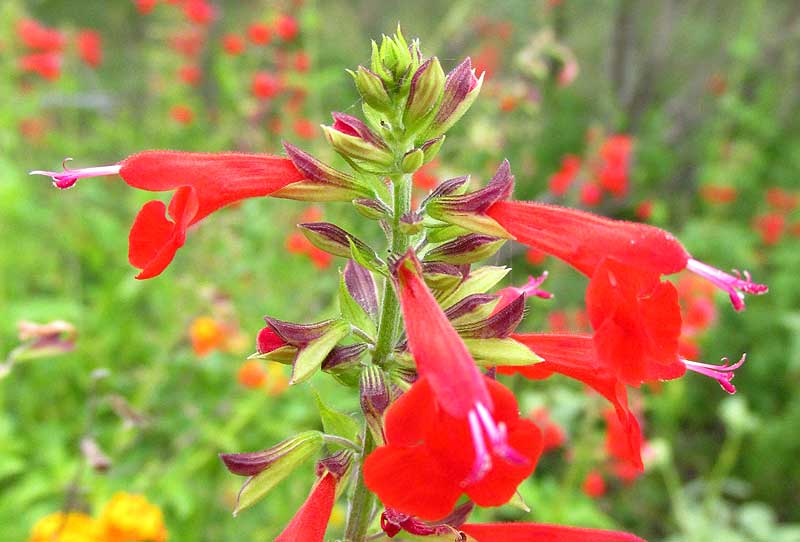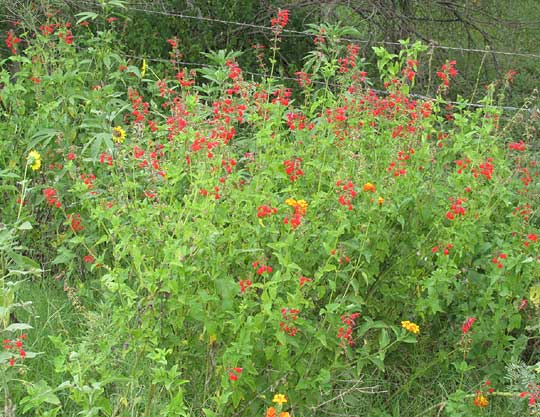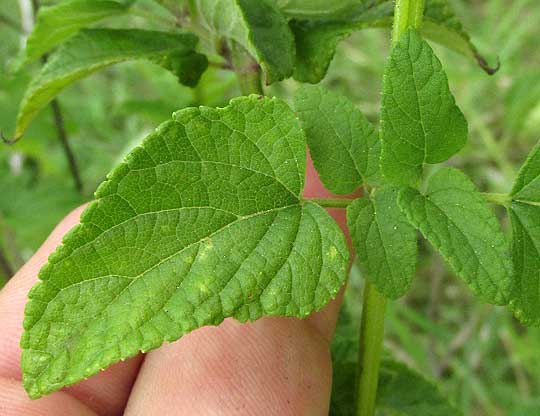Excerpts from Jim Conrad's
Naturalist Newsletter

from the August 3, 2014 Newsletter issued from the Frio Canyon Nature Education Center in the valley of the Dry Frio River in northern Uvalde County, southwestern Texas, on the southern border of the Edwards Plateau; elevation ~1750m (~5750 ft); N29.62°, W99.86°; USA
SCARLET SAGE
Down in Uvalde on the Coastal Plain 35 miles south of Juniper House the landscape is much greener than here, and wildflowers are much more in evidence. I'm told that in years past normally it was the opposite, as evidenced by our having forests of juniper and oak on our hills here, but only low scrub of Mesquite, various acacias and such down there. Below, you can see one pretty cluster of wildflowers just outside Uvalde, next to a fence where the mowers couldn't get them:

A close-up of the brilliantly red, inch-long (25mm) flowers appears at the top of this page. The plant's leaves, two to a node and therefore "opposite," on a stem that's square in cross-section, are shown below:

The strongly bilaterally symmetrical flowers, opposite leaves and squared stem suggest the Mint Family, but gardeners hardly need to think in taxonomic terms to know that here we have the famous Scarlet Sage, SALVIA COCCINEA. Our plants may look different from Scarlet Sage in your garden because most garden cultivars are selected to be shorter and to have more numerous, more closely packed and longer lasting flowers than the wild plants, and these outside Uvalde are wild.
Wild Scarlet Sage occurs far beyond its presumed native land of Mexico. It ranges from the US Southeast where it's especially at home on hot sand along the Gulf Coast, south through all of Mexico and Central America into South America as far as Brazil.
Among folks using medicinal herbs, sages in general are thought of as affecting the nervous system, the most typical effect being a general mellowing out. One web page describes a more precise effect: "... calming without distancing ourselves from the issues at hand, simply soothing us enough to look life in the face." Among the many sages, genus Salvia, Scarlet Sage is singled out as "quite relaxing." You can make teas from the leaves, alcohol-based tinctures, extracts with vinegar and oils, and some people just eat the leaves, though at least one report mentions leaf-eating as causing headaches.